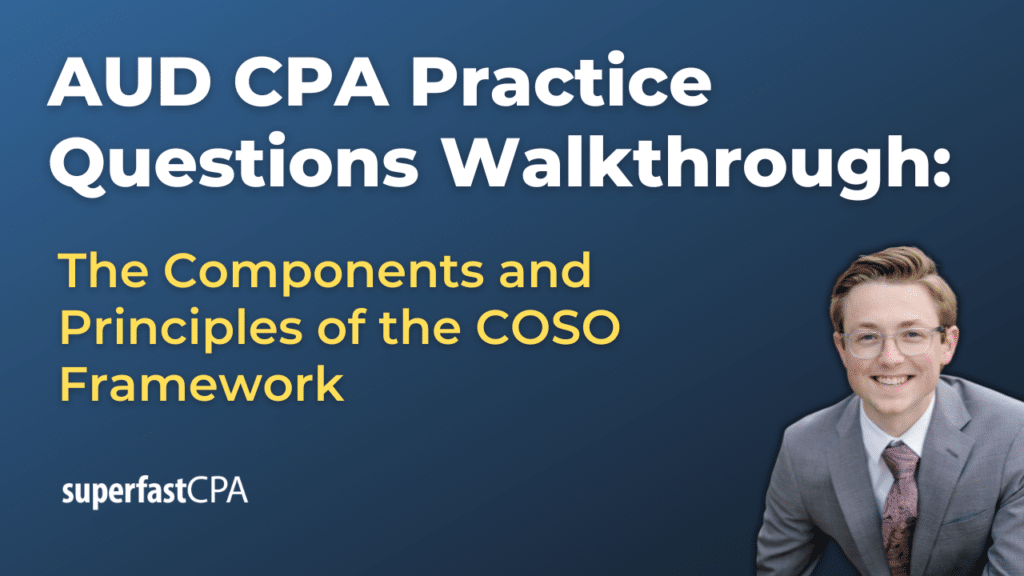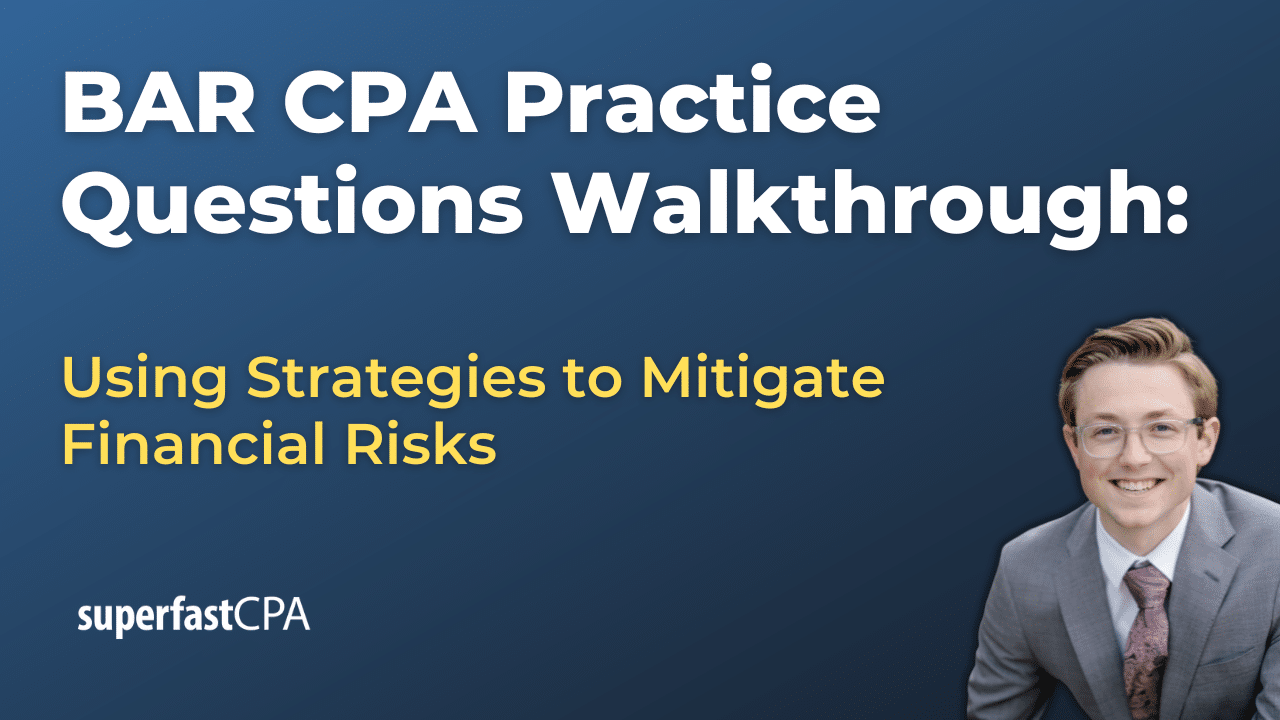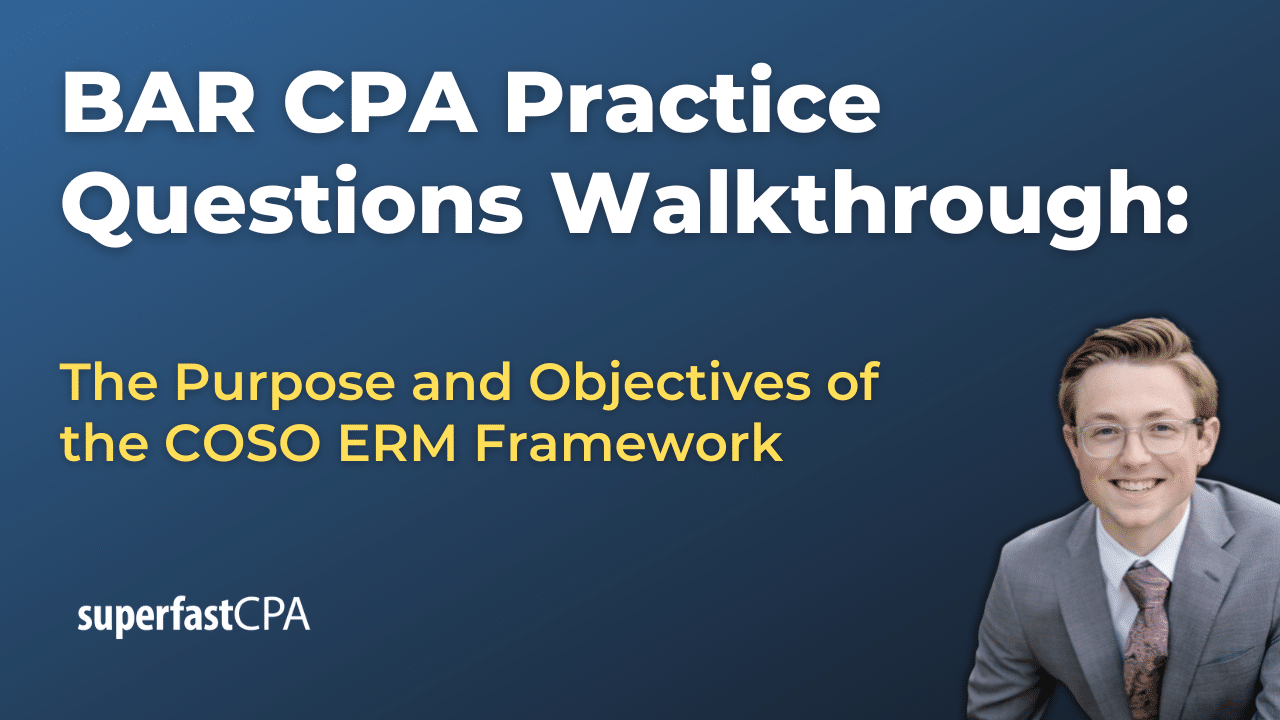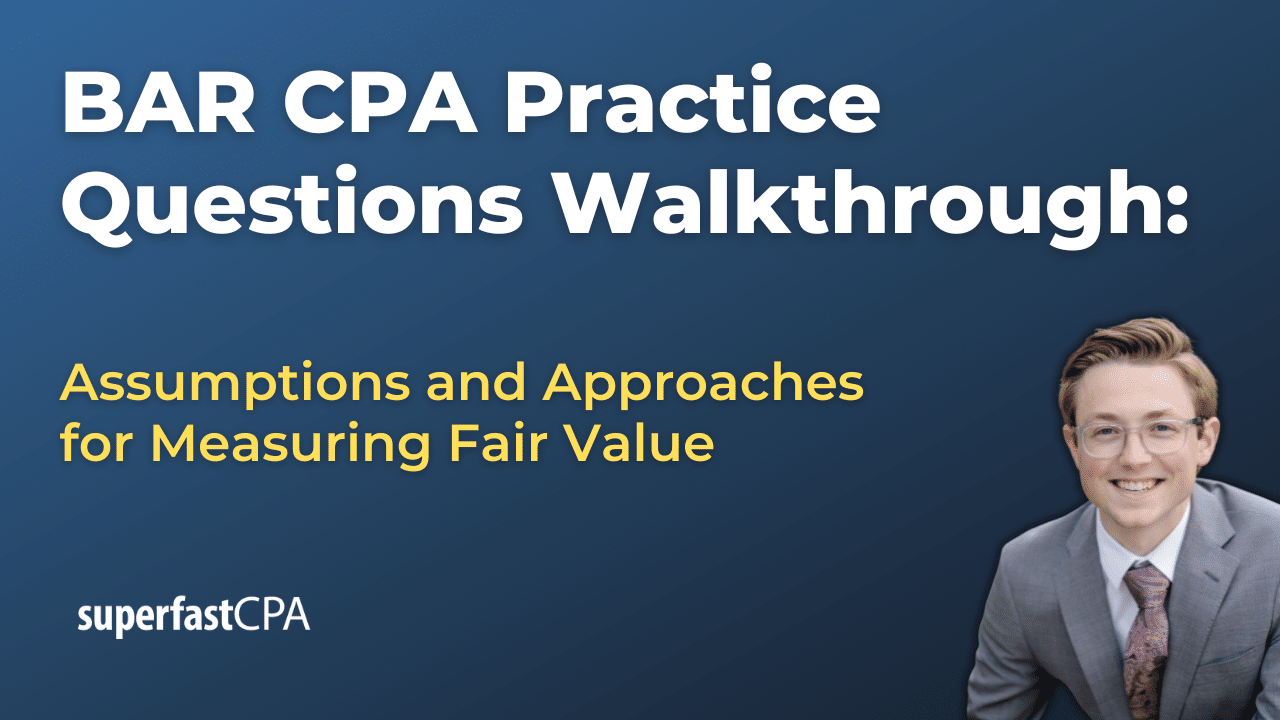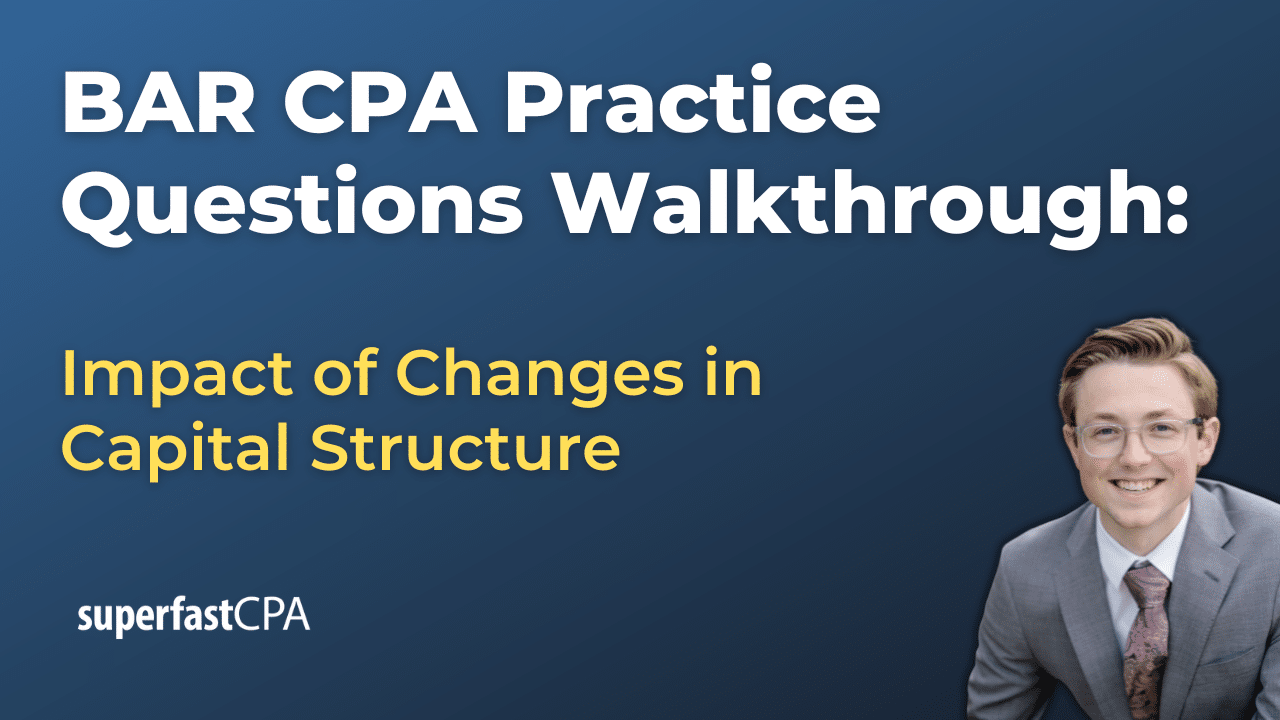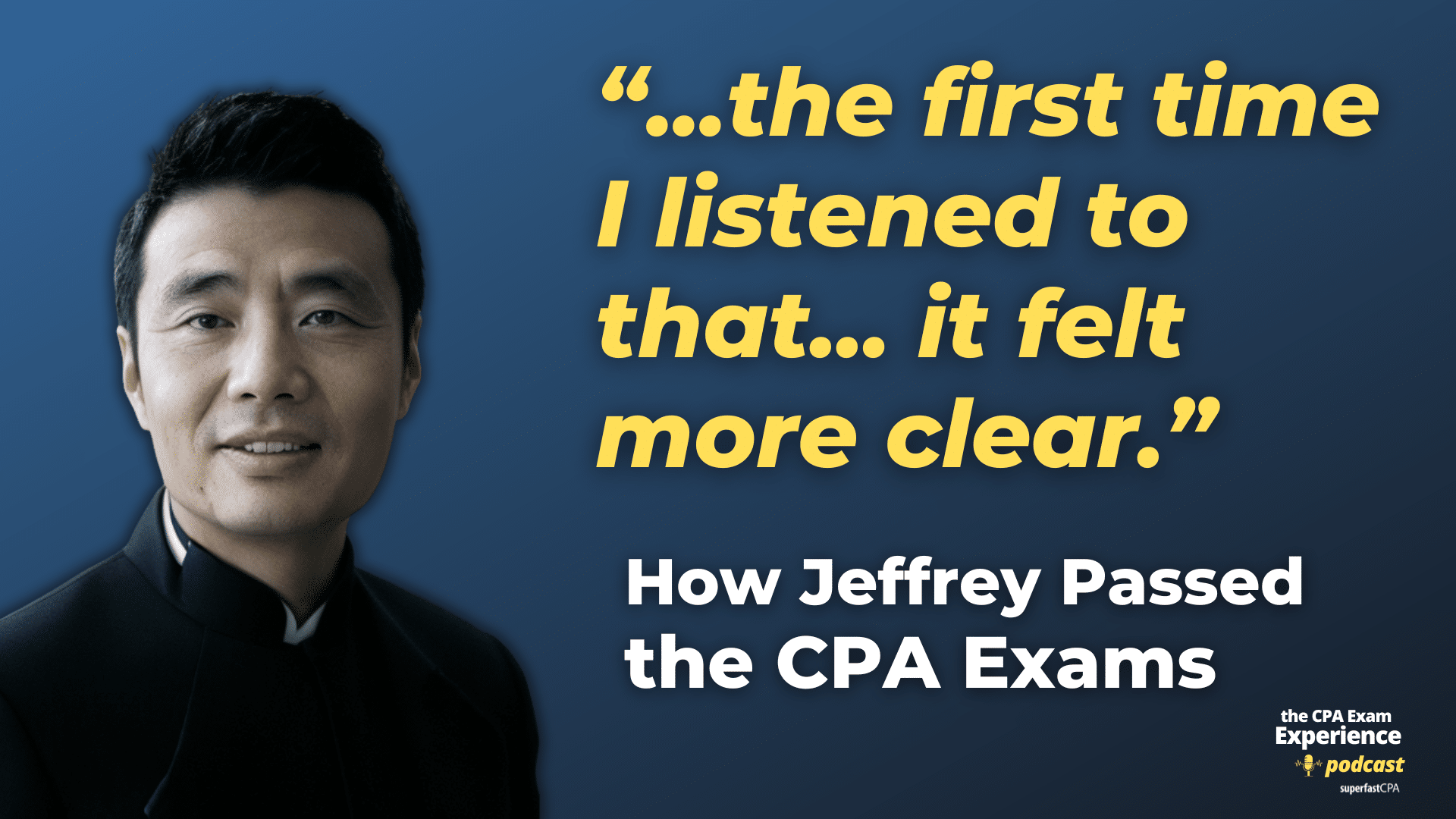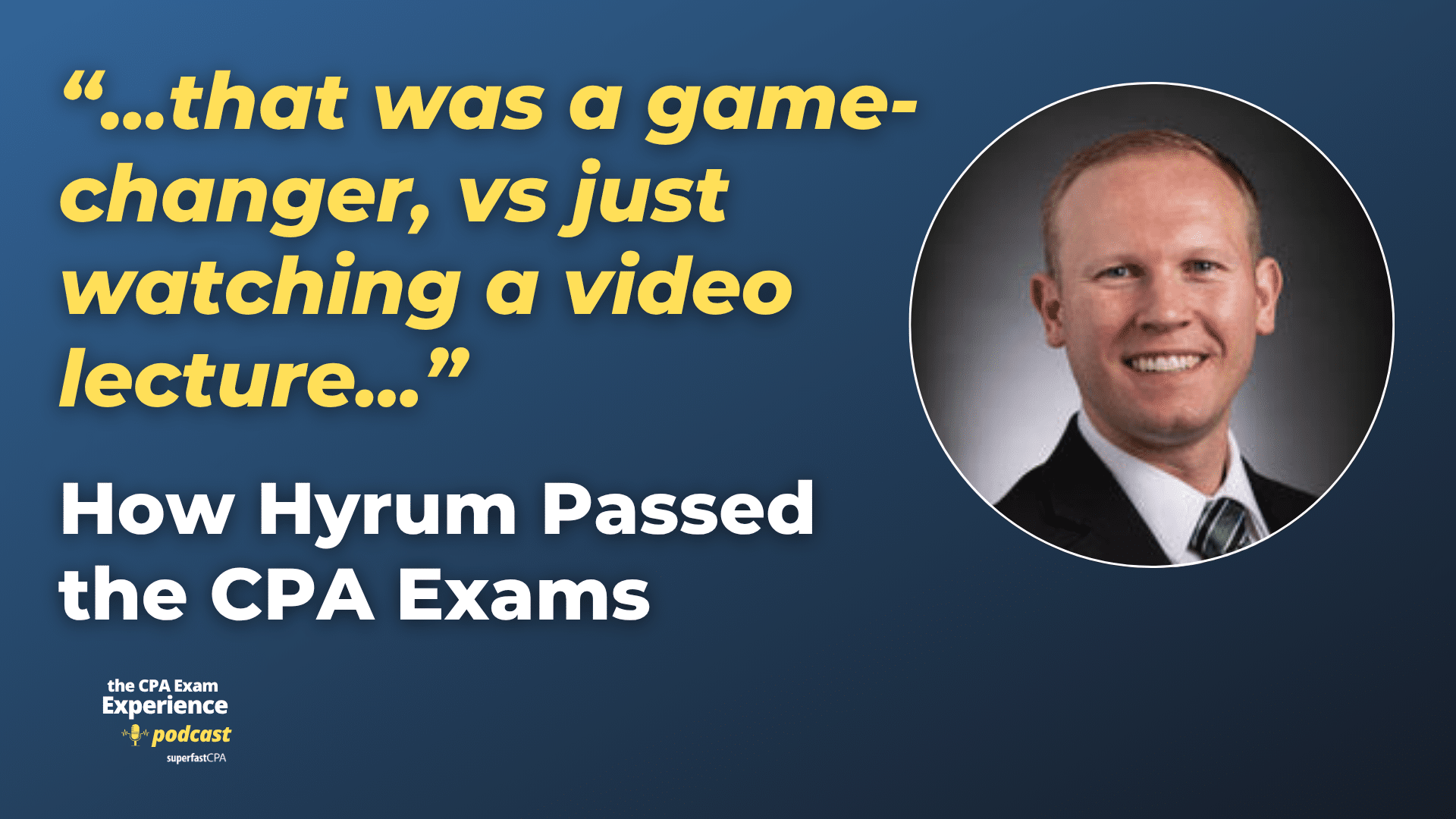In this video, we walk through 6 AUD practice questions to teach about the components and principles of the COSO framework. These questions are from AUD content area 2 on the AICPA CPA exam blueprints: Assessing Risk and Developing a Planned Response.
The best way to use each video is to pause each time we get to a new question in the video, and then make your own attempt at the question before watching us go through it.
Also be sure to watch one of our free webinars on the 6 “key ingredients” to an extremely effective & efficient CPA study process here…
The Components and Principles of the COSO Framework
The COSO Internal Control Framework is one of the most widely used models for designing, implementing, and evaluating internal control systems. It provides organizations with a structured approach to managing risks, ensuring reliable financial reporting, and achieving compliance with laws and regulations.
At the core of the framework are five interrelated components, each supported by specific principles that help organizations build an effective internal control system. These components work together, ensuring that internal controls are properly designed, implemented, and maintained across all levels of an organization.
Additionally, the framework is represented visually by the COSO Cube, which highlights the relationship between the components, the organization’s objectives, and the different levels at which internal controls apply.
1. Control Environment
The control environment establishes the tone at the top and serves as the foundation for all other components. It reflects an organization’s commitment to ethics, integrity, governance, and accountability. A strong control environment ensures that employees and management understand the importance of internal controls and operate within a culture that prioritizes ethical behavior.
Key Principles:
- Commitment to ethics and integrity – Leadership must set and enforce ethical standards.
- Board independence and oversight – A strong, independent board provides oversight of internal control.
- Organizational structure and accountability – Clearly defining roles and responsibilities ensures accountability.
- Commitment to competency – Hiring and developing employees with the necessary skills supports effective controls.
Example:
A publicly traded company implements a Code of Ethics that requires employees to report unethical behavior. The board of directors actively oversees internal control policies and ensures that management enforces them consistently.
2. Risk Assessment
Risk assessment involves identifying, analyzing, and responding to risks that could prevent an organization from achieving its objectives. This includes assessing fraud risks, operational risks, and external risks that may require changes to internal controls.
Key Principles:
- Specifying objectives – Clearly defining goals helps identify potential risks.
- Identifying and analyzing risks – Management evaluates risks that could impact financial reporting, operations, and compliance.
- Considering fraud risks – Organizations must assess the potential for fraud and management override of controls.
- Assessing changes – Companies must evaluate how internal and external changes affect risk.
Example:
A company expanding into a new international market evaluates regulatory risks and adjusts its internal controls to comply with new laws. It also assesses potential fraud risks related to unfamiliar business practices in the new region.
3. Control Activities
Control activities are the specific policies and procedures that help ensure management directives are carried out. These activities mitigate risks identified during risk assessment and include both manual and automated controls.
Key Principles:
- Deployment of policies and procedures – Controls should be well-designed and consistently followed.
- Selection and development of IT controls – Organizations must implement technology controls to safeguard data.
- Segregation of duties – Duties should be divided to prevent fraud and errors.
Example:
A company implements segregation of duties by ensuring that no single employee can authorize a transaction, record it, and have custody of the related assets. This prevents any individual from both perpetrating and concealing fraud.
4. Information and Communication
Information and communication ensure that relevant, accurate, and timely information is available for decision-making and financial reporting. This includes both internal communication within the organization and external communication with stakeholders such as auditors and regulators.
Key Principles:
- Obtaining and using information – Financial and operational data must be accurate and complete.
- Internal communication – Employees should receive the information necessary to carry out their responsibilities.
- External communication – Organizations must provide relevant data to external parties, such as regulators and auditors.
Example:
An organization implements an automated financial reporting system that ensures transactions are recorded at the correct monetary value and that reports are automatically shared with senior management and external auditors.
5. Monitoring
Monitoring ensures that internal controls continue to function properly over time. This is achieved through ongoing evaluations (such as management reviews) and separate evaluations (such as internal audits). When deficiencies are identified, they must be reported and addressed in a timely manner.
Key Principles:
- Ongoing and separate evaluations – Regular reviews help assess control effectiveness.
- Addressing deficiencies – Control weaknesses should be corrected based on risk prioritization.
Example:
An internal audit team performs periodic reviews of financial controls and reports any deficiencies to management. The company prioritizes corrective actions based on risk, ensuring that critical weaknesses are addressed first.
The COSO Cube: A Three-Dimensional Approach
The COSO Cube visually represents how internal controls operate within an organization. It highlights three key dimensions:
- The Five Components of Internal Control – The foundation of the framework, ensuring a comprehensive approach to risk management.
- The Three Categories of Objectives – Internal controls support objectives related to operations, reporting, and compliance.
- The Organizational Structure – Controls must be applied at different levels, from entity-wide controls to divisions, operating units, and specific processes.
This three-dimensional structure ensures that internal controls are embedded throughout an organization, supporting its goals at every level.
Final Thoughts
The COSO Internal Control Framework provides a comprehensive approach to designing, implementing, and maintaining effective internal controls. By integrating the five components—Control Environment, Risk Assessment, Control Activities, Information and Communication, and Monitoring—organizations can strengthen their internal control systems, enhance financial reporting reliability, and mitigate risks.
Whether preventing fraud, ensuring compliance, or improving operational efficiency, the COSO framework serves as a best-practice model for organizations striving to establish and maintain a strong system of internal control.

